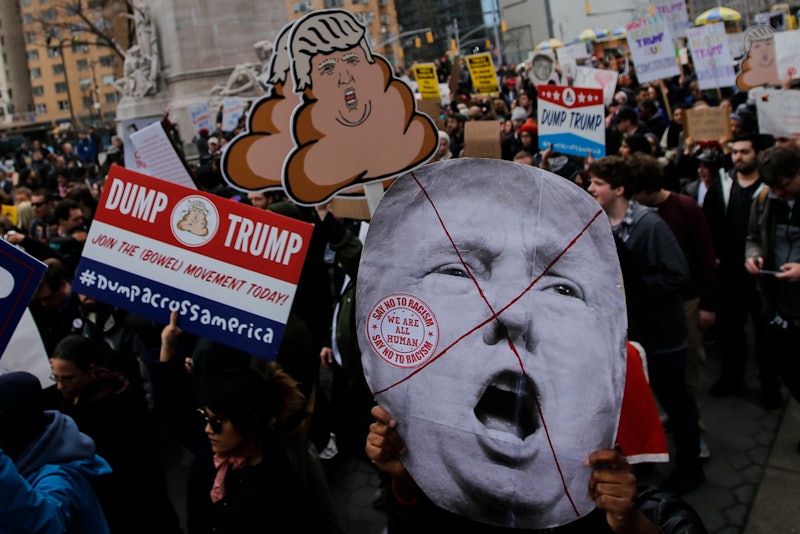News
What's A 'Winner-Take-All Trigger' Primary?
Donald Trump is on the precipice of winning the 1,237 delegates needed to clinch the Republican nomination, and whether he meets or falls short of that goal will depend largely on the results of the New York primary on April 19. The state's 95 delegates will be divided up in a complicated manner that's referred to, convolutedly, as "proportional with a winner-take-all trigger." Okay, so what's a winner-take-all trigger, and how will it affect the primary in New York?
New York's delegates will be divided up proportionally, based on each candidate's share of the vote — unless one candidate wins a majority, in which case they'll get all of the delegates. But it's a bit more complex than this, and the complexities carry one very big implication for all of the candidates.
Like most states, New York distinguishes between at-large delegates, who ostensibly represent the whole state, and congressional district delegates, who represent individual districts. There are 14 at-large delegates in New York and 27 congressional districts; each district is worth three delegates, for a total of 81. And what's crucial here is that the winner-take-all trigger applies to both types of delegates.
Here is what this means: If a candidate wins a majority of the statewide vote, they'll take all of the New York's 14 at-large delegates; meanwhile, a candidate who wins over 50 percent of the vote in an individual congressional district will walk away with all three of that district's delegates.
This results in an interesting dynamic wherein candidates, if they want to maximize their delegate haul, need compete across the entire state, in every single congressional district. Contrast this with a true winner-take-all state like Ohio, where the candidate who comes in first place statewide automatically wins every delegate in the state, regardless of how the congressional districts vote. John Kasich, in large part because he's the governor, was able to cobble together a simple majority in his state, and won all 66 of Ohio's delegates as a result.
In the Empire State, that's not a possibility. Donald Trump, despite his popularity in New York, can't win all 95 delegates merely by getting 50-percent-plus-one of the statewide vote. To take all of the delegates, Trump would need to win a statewide majority and majorities in every individual congressional district. That includes rural upstate districts and heavily Democratic ones, many of which have not even been polled this cycle.
Trump currently has a small lead in his home state. But thanks to New York's delegate rules, dominating the statewide vote won't be enough to get him every New York delegate. It's far more important for him to perform well evenly, across the state, in each congressional district. And because New York has twice as many Democratic districts than Republican ones, this means that Trump will have to start appealing to Democrats long before the general election begins. That isn't normal in a primary — but then again, neither is anything else that's happened this cycle.
